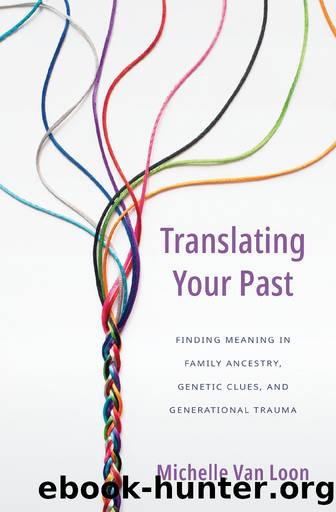Translating Your Past by Michelle Van Loon;

Author:Michelle Van Loon;
Language: eng
Format: epub
Publisher: Firebrand Technologies
Published: 2021-12-21T00:00:00+00:00
Negative space can frame changes in family structure because of remarriage or cohabitation. If youâre of a certain age or watched a lot of reruns of 1970s sitcoms at some point in your childhood, you probably remember the story of the second marriage of single parents Carol and Mike, whose family comprised her three daughters and his three sons. (Mike was a widower, and the original show never directly indicated whether Carol was divorced or widowed.) The Brady Bunch gave America an idealized look at the life (and groovy 1970s wardrobe) of a blended family. Blended families are created when one or both adult partners in a relationship have children from a previous relationship.
The show reflects a cultural shift as the long-held stigma around divorce and remarriage rapidly loosened. In 1960, 87 percent of American children were living in a two-parent household.5 The overwhelming majority of those households were first marriages for both parents. By the time The Brady Bunch went off the air in 1974, 70 percent of children were living in a two-parent household. Today, more than a third of children under age eighteen are living with one parent.6
A 2015 Pew Research Center survey describes the changing face of the American family:
Not only has the diversity in family living arrangements increased since the early 1960s, but so has the fluidity of the family. Non-marital cohabitation and divorce, along with the prevalence of remarriage and (non-marital) recoupling in the U.S., make for family structures that in many cases continue to evolve throughout a childâs life. While in the past a child born to a married coupleâas most children wereâwas very likely to grow up in a home with those two parents, this is much less common today, as a childâs living arrangement changes with each adjustment in the relationship status of their parents. For example, one study found that over a three-year period, about three-in-ten (31%) children younger than 6 had experienced a major change in their family or household structure, in the form of parental divorce, separation, marriage, cohabitation or death.7
A Wall Street Journal report on stepfamilies notes that it can take about ten years for a stepfamily to build lasting family bonds.8 Todayâs fluidity in family structures and living arrangements suggests that a measure of these relationships may not endure long enough for enduring bonds to be created. While disrupted or changing family relationships often carry the grief of loss, they also carry hope and possibility for growth as new family groupings are created.
A sensitive family storyteller will recognize that in earlier generations, both blended families and single-parent households were often stigmatized by society. Stigma pushes people out to the margins and into the shadows. A family storytellerâs attention can serve to destigmatize the past, even if much of that past remains hidden in the shadows.
I had an extended conversation not long ago with an older woman whose parents divorced in the 1940s, around the same time that Edwardâs did. She described the shame she felt throughout
Download
This site does not store any files on its server. We only index and link to content provided by other sites. Please contact the content providers to delete copyright contents if any and email us, we'll remove relevant links or contents immediately.
Twilight of the Idols With the Antichrist and Ecce Homo by Friedrich Nietzsche(18376)
CHERUB: The Recruit by Robert Muchamore(2164)
CHERUB: The Fall by Robert Muchamore(2001)
I Capture the Castle by Dodie Smith(1921)
CHERUB: Man vs Beast by Robert Muchamore(1901)
The Edge of the Abyss (Sequel to The Abyss Surrounds Us)(1719)
Black Genesis by Robert Bauval(1542)
all by Unknown Author(1498)
A Brief History of Everyone Who Ever Lived by Adam Rutherford(1474)
Where Do I Start? by Chase Taylor Hackett(1231)
Spook Street (Slough House) by Mick Herron(1194)
2016 Baby Names Almanac(1173)
How to Argue With a Racist by Adam Rutherford(1140)
Painfully Rich by John Pearson(1133)
Genetics by Adam Rutherford(1124)
2011 Baby Names Almanac(1043)
Black Hawk Down by Mark Bowden(1040)
Life After Life: A Novel by Kate Atkinson(1032)
It's All Relative by A. J. Jacobs(1015)
